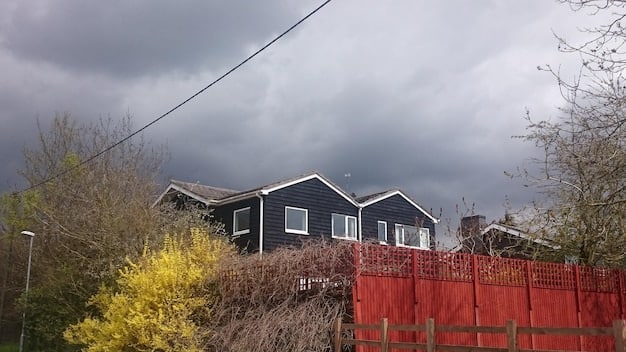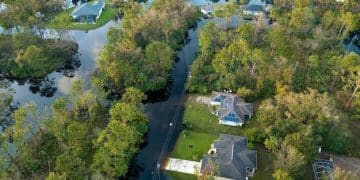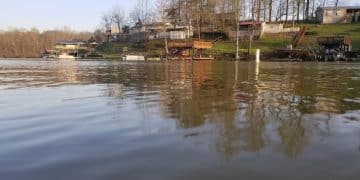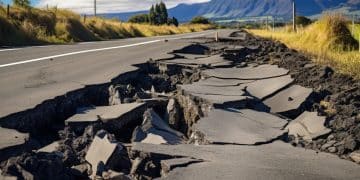Home Hardening: Protecting Your Property from US Natural Disasters

Home hardening involves fortifying your property against the impacts of natural disasters such as hurricanes, wildfires, and floods, using specific construction techniques and materials to enhance resilience and minimize damage.
Protecting your home from the devastating effects of natural disasters is crucial in the US, where various regions face unique environmental threats. Home hardening is a proactive approach that significantly reduces the vulnerability of your property.
Understanding Home Hardening for US Properties
Home hardening encompasses a range of improvements designed to bolster a home’s resistance to common natural disasters in the United States. These modifications can dramatically decrease the risk of damage, potentially saving homeowners significant repair costs and ensuring greater safety.
By understanding the specific threats in your area and implementing targeted hardening strategies, you can create a safer and more resilient home environment.
Identifying Regional Disaster Risks
The first step in home hardening is understanding the types of natural disasters most likely to affect your region. For example, coastal states are prone to hurricanes and flooding, while the West faces wildfires and earthquakes.
Assessing Your Home’s Vulnerabilities
After identifying the risks, assess your home’s weaknesses. This might include evaluating the roof’s ability to withstand high winds, checking the foundation for flood vulnerabilities, and inspecting the landscaping for wildfire risks.

- Roofs: Ensure your roof is securely attached and made of durable materials.
- Windows and Doors: Upgrade to impact-resistant windows and reinforced doors.
- Landscaping: Clear vegetation near your home to reduce wildfire risks.
Understanding your local risks and vulnerabilities is paramount in ensuring you choose the appropriate home hardening strategies. This tailored approach will maximize the effectiveness of your efforts, thus providing your assets the best protection.
Strengthening Your Roof Against Severe Weather
Your roof is the first line of defense against many natural disasters. Strengthening it can significantly reduce the risk of damage from wind, rain, and falling debris. Improving your roof’s stability and material composition are foundational to increasing overall protection.
Investing in a sturdier roof not only protects your family but also your property. It’s an investment in security that offers long-term dividends during a disaster.
Choosing Durable Roofing Materials
Consider materials like metal, tile, or impact-resistant shingles, which are designed to withstand high winds and hail, offering superior protection compared to traditional asphalt shingles.
Reinforcing Roof Connections
Ensure your roof is securely connected to the walls and the frame of your house. This is often achieved through hurricane straps or clips, which provide added resistance against uplift forces.
Strengthening your roof is a fundamental step in home hardening. By selecting durable materials and reinforcing connections, you significantly enhance your home’s ability to weather severe storms and other natural disasters, making it safer for you and your family.
Upgrading Windows and Doors for Impact Resistance
Windows and doors are often the weakest points in a home during a natural disaster. Upgrading these elements with stronger, impact-resistant options can significantly increase your home’s overall resilience.
By replacing vulnerable entry points, you protect the interior from damage caused by intrusions. This in turn minimizes the risk of structural failure and damage to your possessions.
Installing Impact-Resistant Windows
These windows are designed with laminated glass that can withstand high impacts without shattering, providing a barrier against flying debris during severe weather.
Reinforcing Entry Doors
Use solid-core or metal doors with reinforced frames and multiple locking points to prevent them from being breached during a storm or forced entry.

- Shatter Resistance: Impact windows provide a strong defense against flying debris.
- Security: Reinforced doors and locks enhance security against intrusion.
- Energy Efficiency: New windows and doors often come with improved insulation.
Upgrading your windows and doors is a critical step in home hardening. These improvements not only protect against immediate threats but also contribute to long-term energy efficiency and security, thereby ensuring your assets are protected during and after any disaster.
Protecting Your Foundation from Flooding
Protecting your foundation from flooding is vital in areas prone to heavy rains and coastal surges. Water damage can compromise the structural integrity of your home, leading to costly repairs and potential health hazards.
Taking preventative measures to keep water away from your foundation helps safeguard your home and maintain its value. It is a practical and effective strategy for long-term protection.
Elevating Utilities
Raise your HVAC systems, electrical panels, and water heaters above the potential flood level to prevent damage and ensure they remain functional during and after a flood.
Installing Flood Vents
These vents allow water to flow in and out of the foundation, reducing hydrostatic pressure that can cause walls to collapse.
Ensuring that utilities are safely elevated is another key element. It helps maintain their functionality. Flood damage can severely cut off necessary utilities.
Landscaping for Wildfire Defense
In areas prone to wildfires, the landscaping around your home plays a critical role in its defense. Creating a defensible space can significantly reduce the risk of fire spreading to your property.
By managing vegetation and using fire-resistant materials, you can create a barrier that helps protect your home from oncoming flames. This proactive approach can make a big difference in wildfire-prone regions.
Creating Defensible Space
Clear vegetation within 30 to 100 feet of your home, creating a zone where there is less fuel for a fire to burn. This space helps prevent or slow the spread of wildfires towards your house.
Using Fire-Resistant Materials
Opt for non-combustible materials like gravel, stone, and concrete for landscaping elements near your home. Avoid using wood mulch, which can easily catch fire.
Effective landscaping for wildfire defense not only protects your home but also enhances its aesthetic appeal. It’s a dual-benefit approach that improves your property’s overall resilience and beauty.
Securing Detached Structures and Belongings
Securing detached structures and belongings is an essential part of comprehensive home hardening. Sheds, garages, and outdoor furniture can become projectiles in high winds, causing additional damage if not properly secured.
Taking the time to secure these items helps minimize the risk of damage to your home and surrounding property. It’s a simple yet effective way to enhance your overall preparedness.
Anchoring Sheds and Garages
Ensure that detached structures are securely anchored to the ground to prevent them from being lifted or blown away by strong winds.
Storing Outdoor Furniture and Equipment
During severe weather, bring outdoor furniture, grills, and other movable items indoors to prevent them from becoming hazards. Anything that can be picked up by the wind can create risk.
- Anchor Detached Structures: Secure sheds and garages to the ground.
- Store Loose Items: Bring outdoor furniture and equipment indoors.
- Trim Trees: Regularly trim trees to prevent branches from falling.
Securing these elements is often overlooked but is vital considering the potential damage. It is a practical final step in making your home safe from disasters.
| Key Aspect | Brief Description |
|---|---|
| 🏠 Roof Strengthening | Use durable materials and reinforce roof connections. |
| 🚪 Impact-Resistant Windows | Install windows that can withstand high impacts from debris. |
| 🌊 Flood Protection | Elevate utilities and install flood vents to reduce water damage. |
| 🔥 Wildfire Landscaping | Create defensible spaces with fire-resistant materials. |
How can I protect my home from natural disasters in the US?
When should I start home hardening, and what resources are available in the US to help me prepare?
What federal and state programs exist to help US homeowners finance these protective measures?
If my home is damaged, what steps should I take with insurance and FEMA to get assistance?
What are the most cost-effective measures homeowners can take today in the US to prepare their houses?
Regularly inspect your home’s roof, windows, and foundation for any signs of wear or damage. Keep your landscaping well-maintained and clear of debris. Store emergency supplies such as water, food, and a first-aid kit.
Home hardening should begin as soon as possible. Start by assessing your home’s vulnerabilities and identifying the natural disaster risks specific to your region. The Department of Homeland Security and FEMA offer resources that can help you prepare.
FEMA’s Hazard Mitigation Assistance programs and state-specific initiatives can provide funding. Check with your state’s emergency management agency for local grant and loan options, which often prioritize properties at high risk of natural disasters.
Contact your insurance company to file a claim and document all damages with photos and videos. Register with FEMA for potential disaster assistance, which may include grants for home repairs, temporary housing, and other essential needs.
Focus on securing your roof with hurricane straps, installing impact-resistant window film, and cleaning gutters and downspouts. Creating a defensible space around your home to reduce wildfire risk is also a cost-effective preventive measure.
Conclusion
Home hardening is a crucial investment for homeowners in the US, providing a proactive approach to defend against the increasing threats of natural disasters. By understanding the risks specific to your region and implementing targeted strategies, you can significantly enhance your property’s resilience, ensuring greater safety and peace of mind for you and your family.





